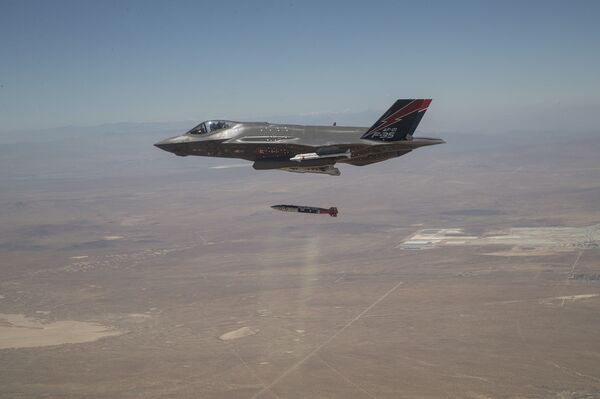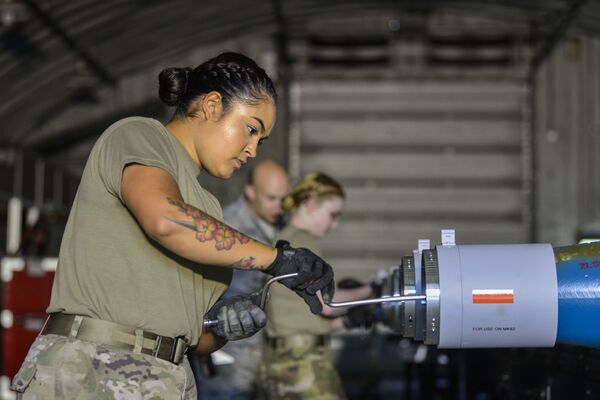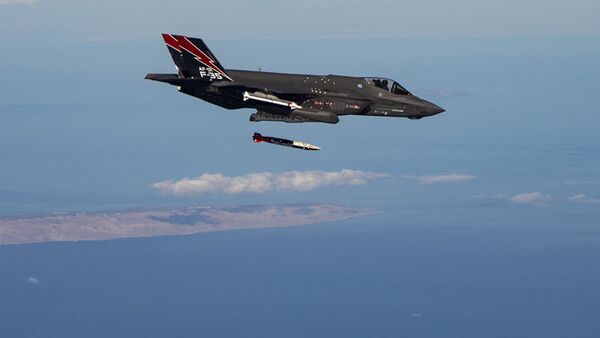In nearly a dozen photos published by the F-35 Joint Program Office earlier this month, the Pentagon’s newest stealth fighter can be seen testing its ability to deploy the latest iteration of the B61 nuclear bomb. The weapon, with a maximum explosive yield of 50 kilotons, is small enough to fit inside the F-35’s internal bomb bay.

However, the Joint Strike Fighter’s ability to deploy the B61-12 is dependent on the sweeping upgrades in the Block 4 software release, which a Government Accountability Office (GAO) report recently revealed had been pushed back by at least nine months. However, the F-35A’s DCA certification isn’t expected to be complete until January 2023, according to the Office of the Secretary of Defense.

Block 4 will give the F-35 other weapons options, too, such as the Naval Strike Missile, the Meteor and SPEAR missiles and several laser-guided bombs.
Another bomb the F-35 was already certified to use, the GBU-53 StormBreaker “small diameter bomb,” recently suffered a year’s delay thanks to a faulty fin design. Weapons that can fit inside the F-35’s bomb bay are scarce but valuable, since if they are mounted on hardpoints on the aircraft’s exterior, they will inhibit its stealthiness.
As Sputnik reported, the F-35 is due to replace several nuclear-certified aircraft for NATO members, meaning that their ability to deploy US-owned nuclear weapons would be hampered if their air forces fly no other capable aircraft.

“The iconic nuclear fighter role, performed in the past by the F-15E and F-16, is being passed to the F-35A to play a future role in national security,” reads a photo caption on the Defense Visual Information Distribution Service (DVIDS), which carried the photos.
“The F-35 is the premier multi-mission, 5th generation weapon system. Its ability to collect, analyze and share data is a force multiplier that enhances all assets in the battle-space: with stealth technology, advanced sensors, weapons capacity and range, the F-35 is the most lethal, survivable, and interoperable fighter aircraft ever built,” the caption notes.
The F-35E Strike Eagle was the first US aircraft to be certified to drop the B61-12, which was developed in 2015, though production of usable bombs only began in March 2020. Strike Eagles tested dropping inert bombs at the Tonopah Test Range in Nevada in March, according to Sandia National Laboratories, which operates the site.
Meanwhile, at the remote Eielson Air Force Base in central Alaska, munitions support personnel began the intricate process of assembling bombs for the base’s first squadron of F-35s - the first for US Pacific Air Forces. The first Joint Strike Fighters began arriving in April.
Photos published by Eielson show munitions crews assembling GBU-12 Paveway II laser-guided bombs.

“We’re going to be building a total of 70 bombs over the course of the week,” Master Sgt. Jason P. Brackins, the 354th Maintenance Squadron’s head non-commissioned officer, said in a base news release.

